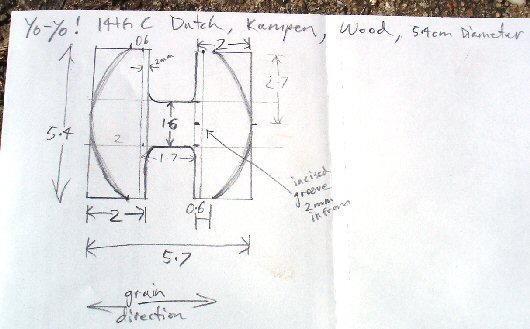
Fig 1: My design, including calculations and approximations for all the dimensions.
Crispin Sexi, 2009
Annemarieke Willemsen's book "Kinder delijt - Middeleeuws speelgoed in de Nederlanden" includes a 14thC wooden yo-yo from Kampen. This is the first evidence of yo-yos we've come across in the medieval period, however it looks very similar in form to modern yo-yos. Prior to the medieval period, a yo-yo is portrayed being used by a man in the decoration on a C500BC Greek vase (Fraser). For a toy that is modernly quite popular, but also as ancient as this, it is strange that an abundance of information about the medieval history of this toy has not been forthcoming.
Lucky's History of the Yo-Yo has some interesting information, including mention of a Dutch tile from 1630-1650 that depicts a boy playing with a yo-yo. We've also found a few possible early names for the yo-yo; bandalore, l'emigrette, Quiz, and also Joujou de Normandie. Possibly more evidence about the medieval yo-yo could be found if one knew what it was called.
Willemsen includes the dimensions of the Dutch yo-yo, but not the type of wood. She also mentions remains of the original string. For my reproduction, I have tried to stay close to the original dimensions: 5.4cm diameter, 2cm thickness of halves, 1.6cm diameter axle. Keeping with the given information, I have not bothered to determine what sort of wood I have used. Since the photo shows the grain of the wood, especially the core of the rings matching somewhat closely with the core of the yo-yo, I judged that the item was carved from a single short section of branch. The splits in the wood stretching from the edge onto the axle support this construction. Given the uneven shape, it was unlikely to have been turned on a lathe. The only apparent decoration is an incised line aound the outer edge of both mushroom-shaped disks.

Fig 1: My design, including calculations and approximations for all the dimensions.

Fig 2: A bit of branch I had lying around.
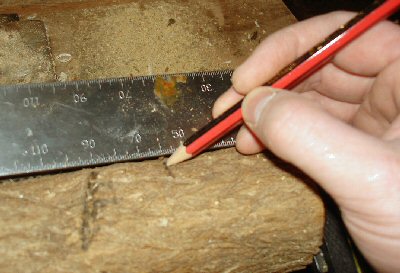
Fig 3: Measuring and sawing off a piece 5.7cm long.
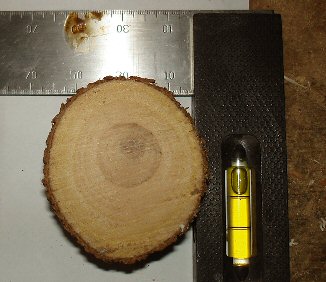
Fig 4: Check the size. The piece is not quite round.
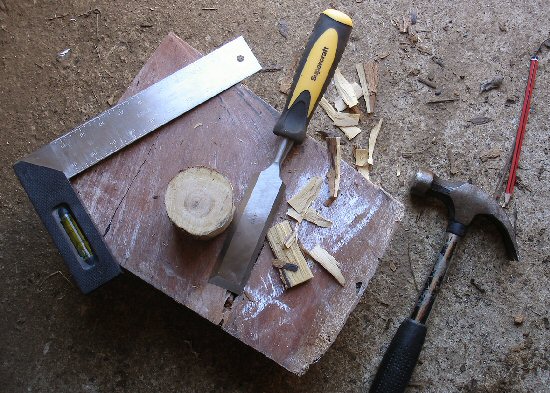
Fig 5: I used a chisle to make the log rounder. And then my power sander to make it rounder still.
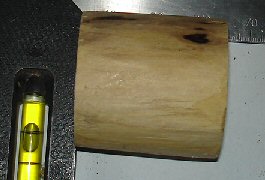
Fig 6: The piece, ready for shaping.
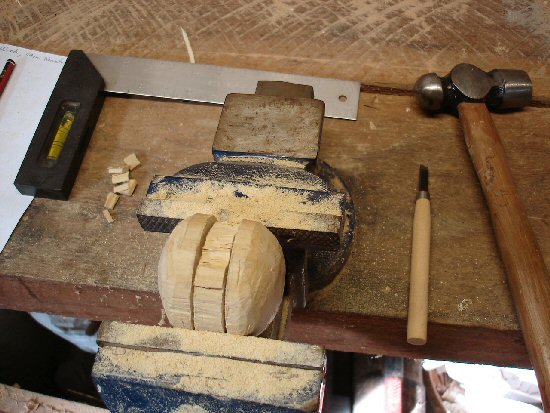
Fig 7: I started to round the sides using a carving knife, but it was taking a while, so I used my power sander again. Then I sawed and chiselled to make the central axle.
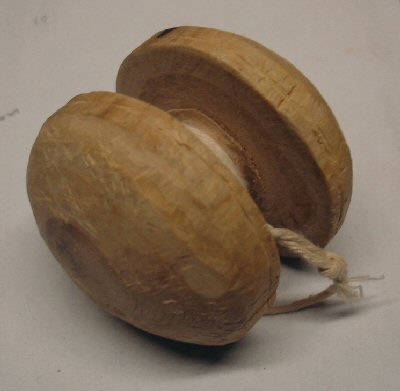
Fig 8: After filing the axle and inner edges of the disks smooth and adding a piece of string, my yo-yo is complete.
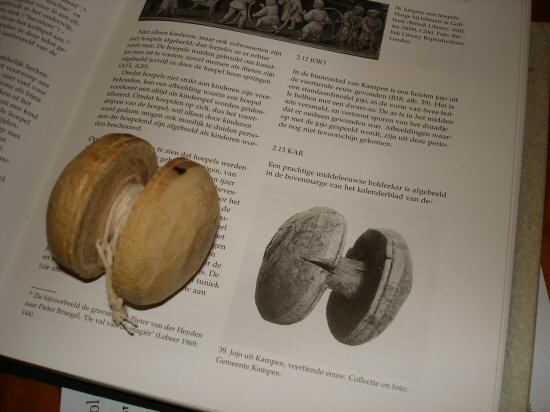
Fig 9: Comparing mine to the photo of the original. My attempt is the one on the left. I think I should have made my axle slightly longer.
I took this yo-yo along to a feast in the evening and people with far more dexterous skill than me proved it to work quite satisfactorily, after fixing how I had attached the string.
Willemsen, Annemarieke, Kinder delijt - medieval toys in the Netherlands, Nijmegen 1998.
Translation of text from Dutch (courtesy of my wife): "In the inner city of Kampen a wooden yo-yo of the fourteenth century has been found (B18, Figure 39). It is a standard model yo-yo, in the form of two rounded halves with a transverse axis. The axis is in the middle slightly narrowed and reveils traces of the thread with which it was wound. Illustrations wherein the yo-yo is being played with are not known from this period."
Fraser, Antonia, A History of Toys, The Hamlyn Publishing Group Limited, London, 1972 (1st Ed. 1966).
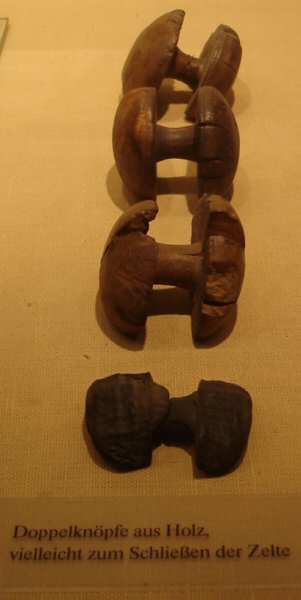
Fig 10: Possible yo-yos from the Saalburg museum.
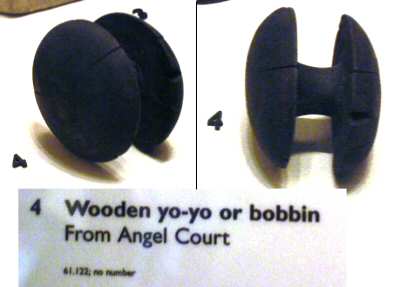
Fig 11: Possible yo-yo from the Museum of London.
On our holiday in Europe in 2012 we found that two museums have artifacts very similar to this yo-yo.
The Saalburg roman fort in Germany has four items they have labelled as double knobs of wood, possibly for closing tents (Fig 10). This fort was abandoned by the Romans around 260AD, so it can be assumed these items date from around that time.
The Museum of London has an item in their Roman section that they have labelled a wooden yo-yo or bobbin (Fig 11). This was found in Angel Court and the Museum have dated it to the 2nd or 3rd century.
While these artifacts might or might not be yo-yos, it does amuse me to think of Roman soldiers playing with yo-yos to pass the time.
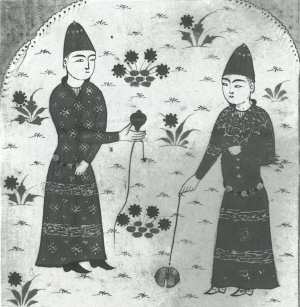
Fig 12: Spinning top and yoyo from Persia, c1500.
Kazamira showed me a book of pastimes that included this wonderful image from the Miftah al-Fuzala, a glossary of rare words and proper names from about 1500. The book was illustrated by a Persian artist (Muhammad ibn Da'ud ibn Muhammad ibn Mahmud Shadiyabadi) imported into Malkwa, India and gives the word "farmuk" for this scene.
The yoyo is spherical and interestingly the string is around the tip of the boy's pointer finger. Although the photo is black and white in the book, the yoyo appears to be painted.
Titley, Norah M., Sports and Pastimes - Scenes from Turkish Persian and Mughal Paintings, The Brittish Library, London, 1979
Copyright Jaysen Ollerenshaw 2009. Free use for non-profit.
Joan & Crispin's Homepage: https://wotnot.squanderlings.com/